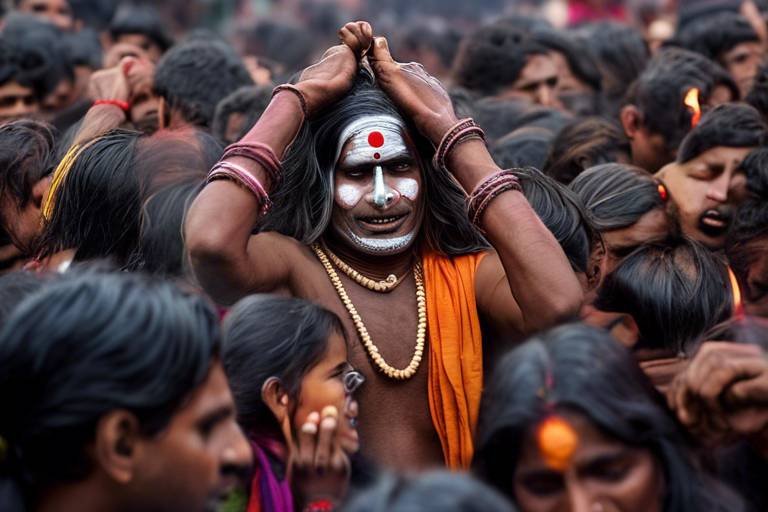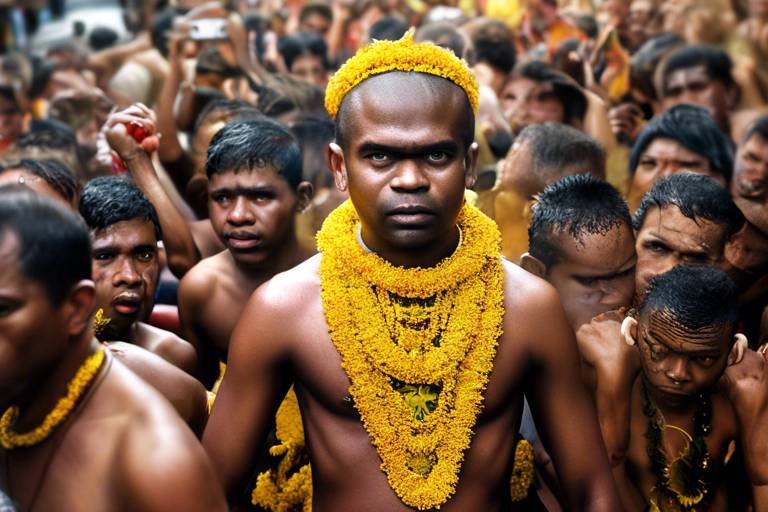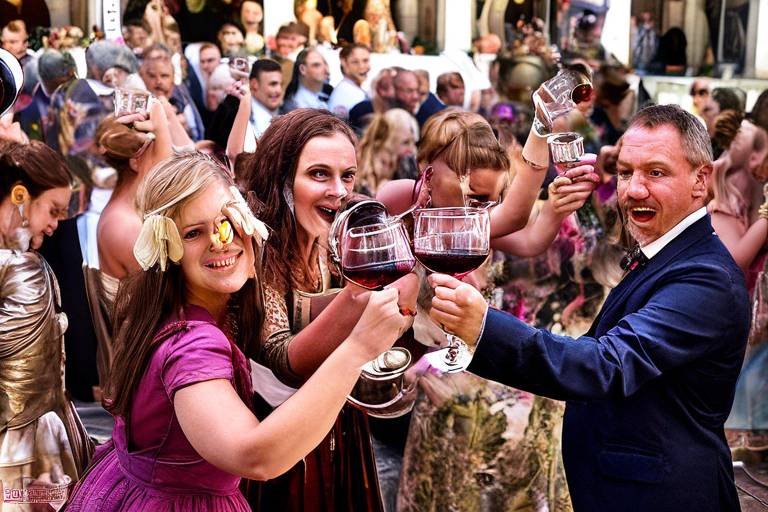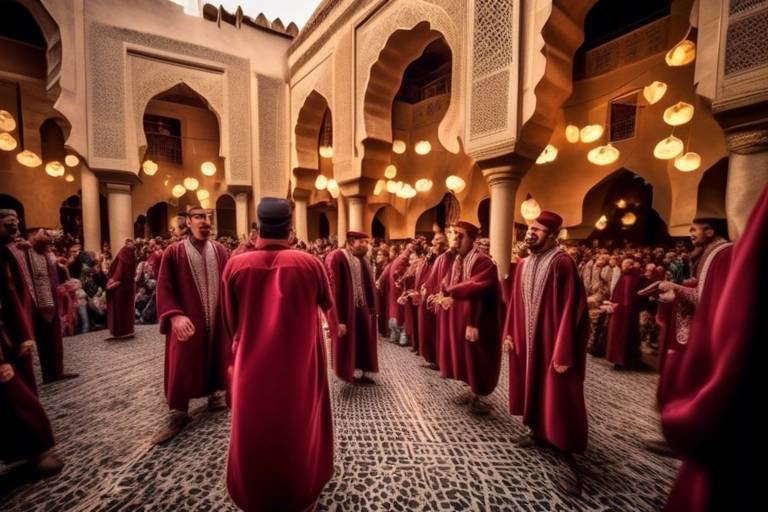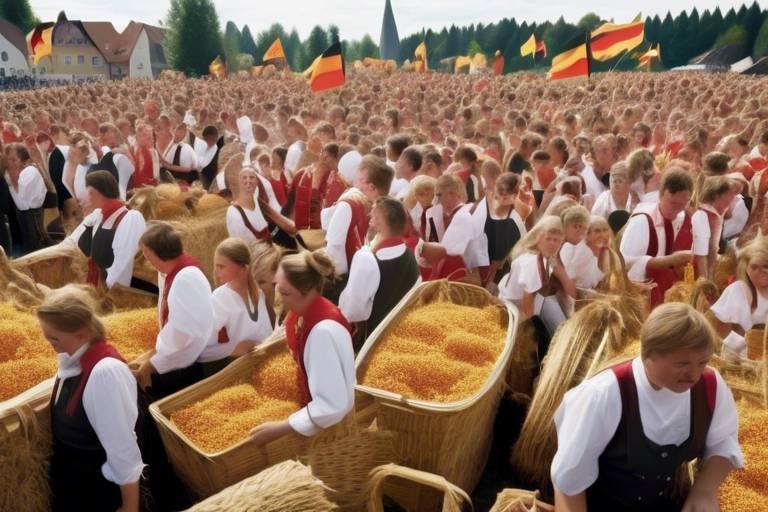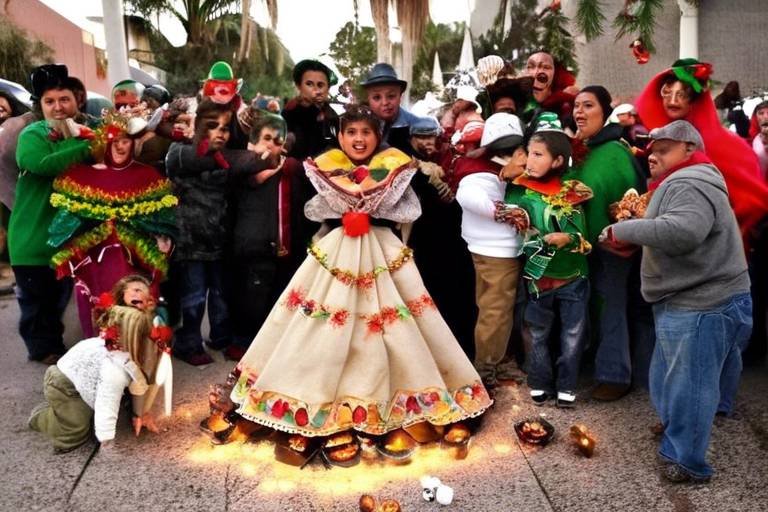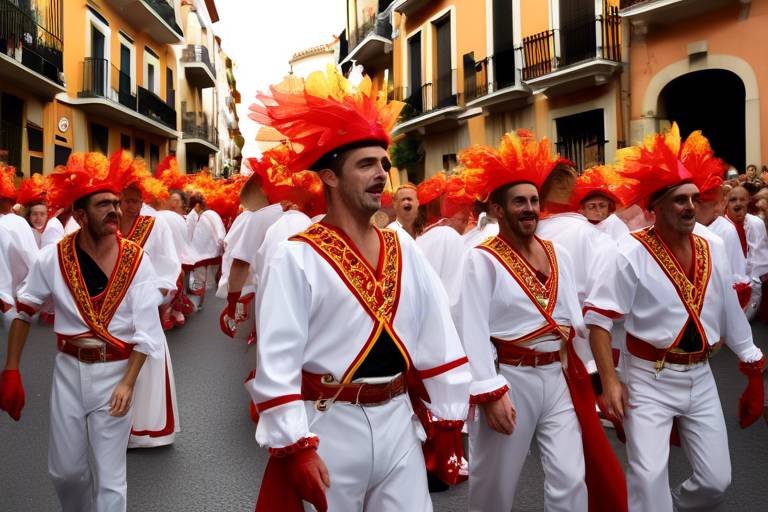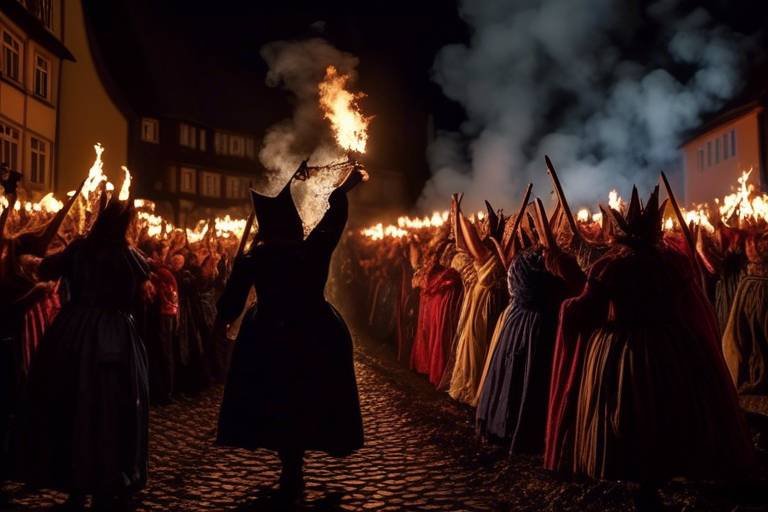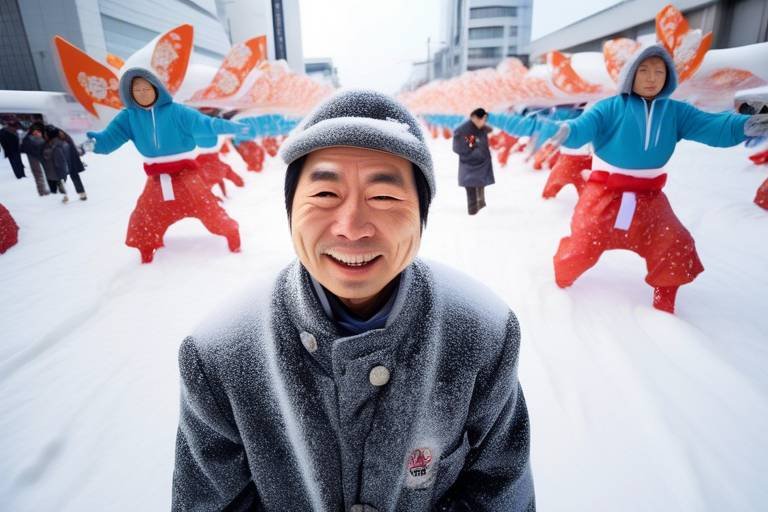The Unique Festivities of India's Maha Shivaratri
India's Maha Shivaratri is a vibrant celebration deeply rooted in cultural and religious significance, dedicated to honoring the Hindu god Shiva. This auspicious festival is marked by fasting, prayers, and vibrant rituals that resonate with divine energy and spiritual devotion.
Steeped in history and ancient origins, Maha Shivaratri holds a special place in Hindu mythology, with tales and scriptures dating back centuries. The festival's historical roots unveil a tapestry of mythological narratives that emphasize the profound importance of this sacred day.
During Maha Shivaratri, traditional customs and rituals take center stage, as devotees engage in acts of fasting, night-long vigils, and sacred ceremonies to seek blessings and divine grace. These practices symbolize reverence and devotion towards Lord Shiva, fostering a deep spiritual connection.
The act of fasting on Maha Shivaratri carries deep spiritual significance, believed to purify the body and mind, instill self-discipline, and forge a closer bond with the divine. It is a time for introspection, renewal, and spiritual growth, as devotees embark on a journey of inner cleansing and purification.
The festive ambiance of Maha Shivaratri is brought to life through colorful decorations, intricate puja arrangements, and joyous celebrations that adorn homes, temples, and streets. The air is filled with a sense of joy and sanctity, creating a sacred atmosphere that resonates with spiritual energy.
Devotional music and dance play a vital role in the festivities, with melodious bhajans, kirtans, and devotional songs reverberating in praise of Lord Shiva. Traditional dances like the Tandava, a cosmic dance symbolizing creation and destruction, are performed to invoke divine blessings and grace.
Symbolism and spiritual teachings are woven into the fabric of Maha Shivaratri, offering profound insights into concepts of destruction and regeneration, inner transformation, and the pursuit of enlightenment. The festival serves as a spiritual journey towards self-discovery and higher consciousness.
As Maha Shivaratri is observed globally, people from diverse backgrounds and cultures come together in unity to celebrate this auspicious occasion. The festival transcends boundaries, fostering a sense of harmony, peace, and spiritual oneness among all who partake in its festivities.
In modern times, Maha Shivaratri continues to hold relevance and significance, with contemporary interpretations breathing new life into ancient traditions. People reinterpret the festival's rituals and teachings to find meaning, inspiration, and spiritual fulfillment in a rapidly changing world.

History and Origins
Exploring the cultural and religious significance of Maha Shivaratri in India, a festival dedicated to the Hindu god Shiva, celebrated with fasting, prayers, and vibrant rituals to honor the divine energy.
The history and origins of Maha Shivaratri are deeply rooted in ancient scriptures and mythological tales that highlight the importance of this auspicious day in Hindu mythology. According to Hindu beliefs, Maha Shivaratri marks the day when Lord Shiva performed the cosmic dance of creation, preservation, and destruction.
Legend has it that during the great churning of the ocean (Samudra Manthan), a pot of poison emerged, threatening to destroy the world. To save humanity, Lord Shiva drank the poison but held it in his throat, turning his neck blue. This event symbolizes the triumph of good over evil and the importance of sacrifice for the greater good.
Throughout history, Maha Shivaratri has been celebrated with devotion and reverence, drawing devotees from far and wide to partake in the rituals and ceremonies that honor Lord Shiva's divine grace and blessings.
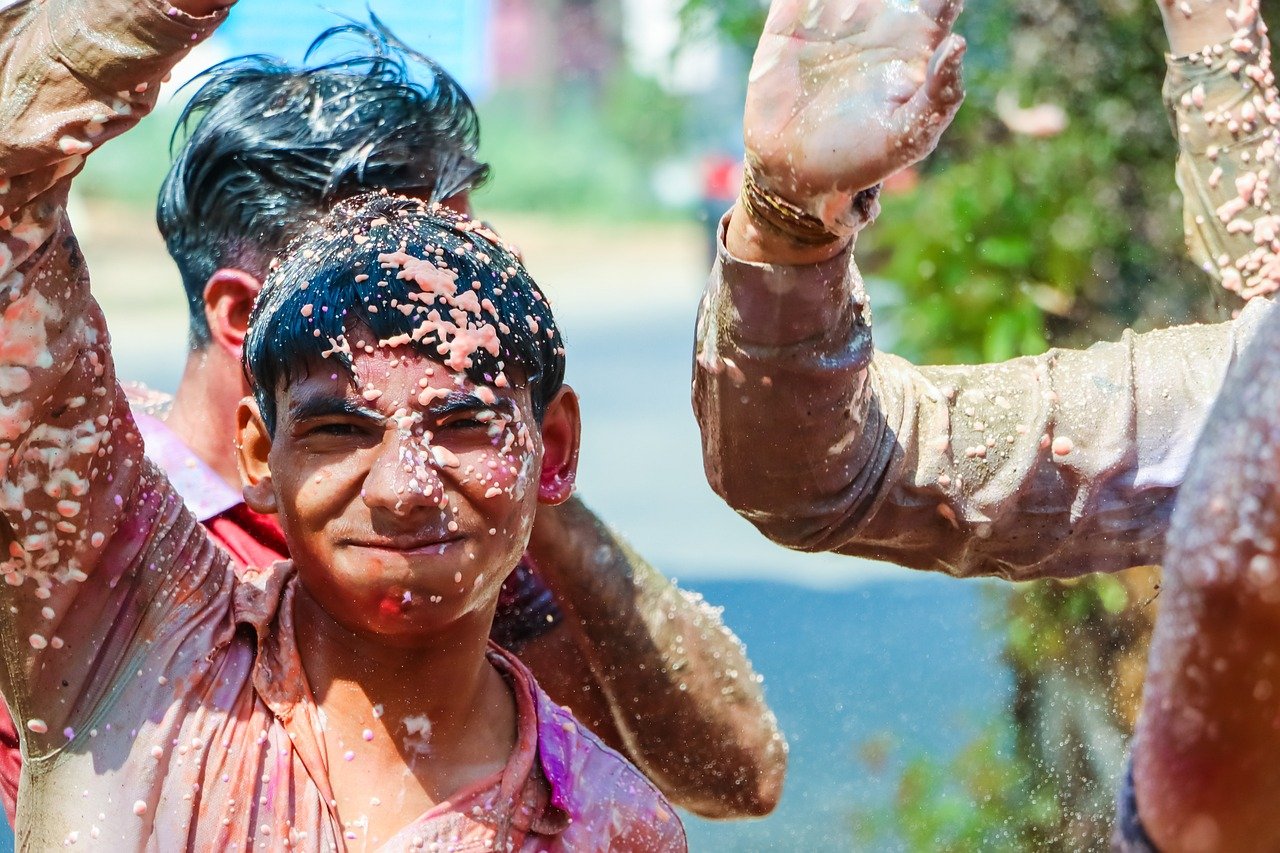
Traditional Customs and Rituals
Traditional customs and rituals play a central role in the vibrant celebration of Maha Shivaratri, enriching the festive atmosphere with deep spiritual significance and cultural traditions. One of the most prominent practices observed during this auspicious occasion is fasting, where devotees abstain from food and water to purify their bodies and minds, symbolizing self-discipline and devotion to Lord Shiva.
In addition to fasting, devotees engage in night-long vigils known as 'jaagran,' staying awake to offer continuous prayers and devotional chants in honor of Lord Shiva. These vigils create a serene and meditative ambiance, fostering a sense of spiritual connection and reverence for the divine energy that permeates the universe.
Another essential aspect of Maha Shivaratri customs is the performance of sacred rituals at temples and homes. Devotees offer bilva leaves, milk, water, and other traditional items to the Shiva Lingam, symbolizing purity, devotion, and gratitude towards the god of destruction and creation. These rituals are believed to invoke blessings, protection, and divine grace for spiritual growth and well-being.
Furthermore, the vibrant decorations and colorful celebrations during Maha Shivaratri add a festive charm to the occasion. Homes are adorned with flowers, lights, and rangoli patterns, while temples are embellished with intricate designs and sacred symbols. The streets come alive with processions, music, and dance performances, creating a joyous atmosphere of unity and devotion among the community.
Overall, the traditional customs and rituals of Maha Shivaratri embody the essence of devotion, spirituality, and cultural heritage, uniting people in a shared celebration of faith and reverence for the divine.

Significance of Fasting
When it comes to Maha Shivaratri, fasting holds a profound significance in the hearts of devotees. This practice goes beyond abstaining from food; it symbolizes a spiritual journey towards self-purification and inner strength. Fasting is believed to cleanse the body and mind, allowing individuals to focus their energies on prayer, meditation, and connecting with the divine.
During Maha Shivaratri, fasting is not just about physical discipline but also about mental and emotional discipline. It is a time to reflect on one's actions, thoughts, and intentions, seeking forgiveness for past wrongs and striving for a more virtuous path ahead. By refraining from worldly pleasures, individuals aim to elevate their consciousness and draw closer to the divine presence of Lord Shiva.
The act of fasting on Maha Shivaratri is rooted in the belief that it helps individuals transcend their material desires and attachments, leading to a heightened sense of spiritual awareness and enlightenment. It is a practice that emphasizes self-control, humility, and devotion, guiding followers towards a deeper understanding of their spiritual essence and connection to the cosmic energy.
Moreover, fasting on Maha Shivaratri is not just a personal endeavor but a communal experience that unites devotees in their shared devotion to Lord Shiva. The collective observance of fasting creates a sense of solidarity and spiritual camaraderie, reinforcing the belief in the transformative power of faith and dedication.
As devotees engage in fasting on Maha Shivaratri, they not only honor the traditions of the past but also embrace the spiritual teachings that resonate in the present. Through this act of self-denial and sacrifice, individuals seek to purify their hearts, minds, and souls, preparing themselves to receive the divine blessings and grace of Lord Shiva.

Decorations and Celebrations
When it comes to the vibrant festivities of India's Maha Shivaratri, one cannot overlook the enchanting decorations and joyous celebrations that adorn the surroundings during this auspicious occasion. Homes, temples, and streets come alive with colorful embellishments and intricate designs, creating a festive and sacred ambiance that captivates both participants and onlookers alike.
The decorations for Maha Shivaratri are often a visual treat, with vibrant flowers, traditional motifs, and intricate rangoli designs adorning entrances and spaces. These decorations symbolize purity, auspiciousness, and devotion, setting the stage for the heartfelt celebrations that follow. Temples are adorned with lights, garlands, and sacred symbols, inviting devotees to immerse themselves in the divine atmosphere.
As the day progresses, the air is filled with the sounds of devotional music and chants, adding to the festive spirit of the occasion. Elaborate puja arrangements are made, offering a visual spectacle that reflects the reverence and dedication of the worshippers. The essence of Maha Shivaratri is beautifully captured in these decorations and celebrations, showcasing the deep-rooted cultural and spiritual significance of the festival.
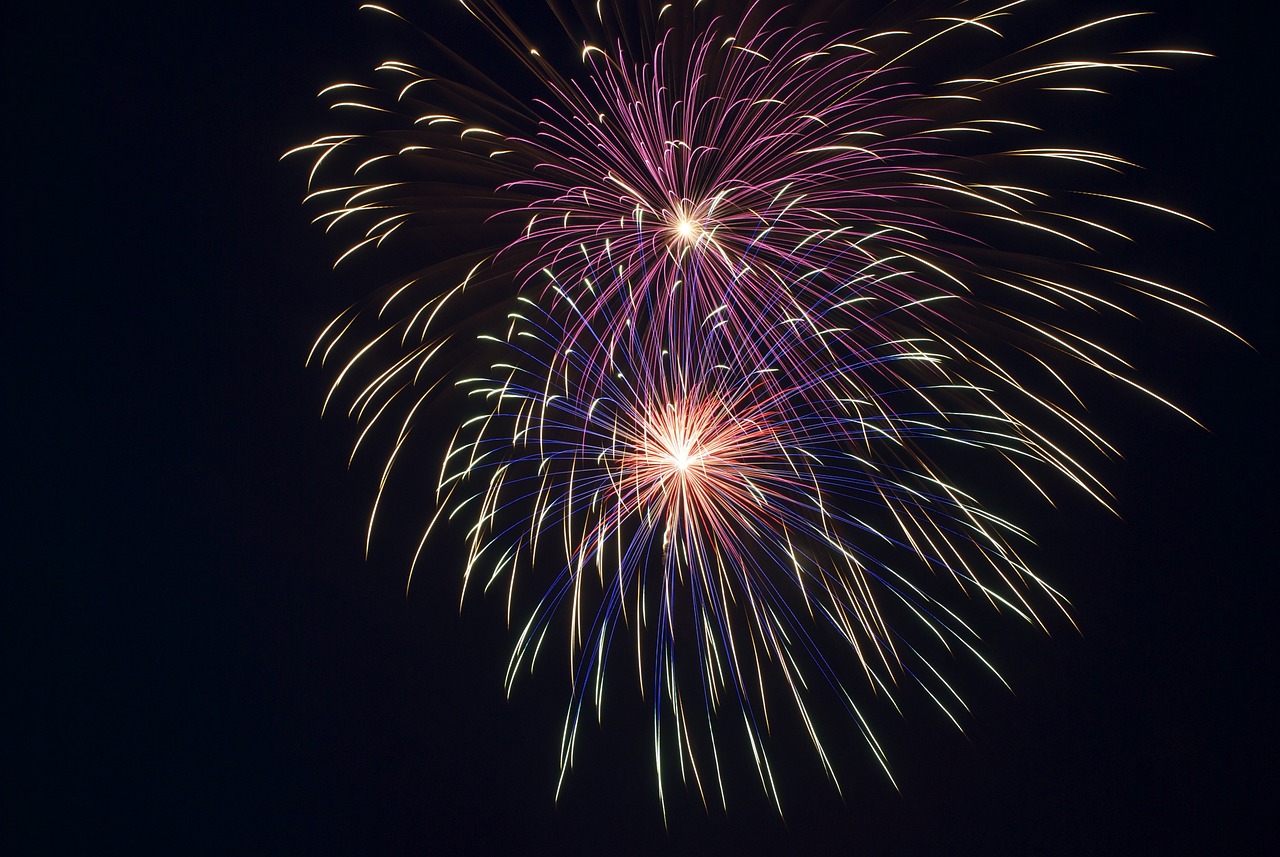
Devotional Music and Dance
Devotional Music and Dance play a central role in the vibrant celebrations of Maha Shivaratri, infusing the atmosphere with spiritual energy and fervor. The rhythmic beats of traditional instruments and soul-stirring chants of bhajans and kirtans resonate through temples and homes, invoking the presence of Lord Shiva. These devotional songs, sung in various languages, express deep reverence and devotion towards the divine, creating a sense of unity among the devotees gathered to celebrate this auspicious day.
One of the most captivating aspects of Maha Shivaratri is the performance of the Tandava, a divine dance associated with Lord Shiva that symbolizes creation, preservation, and destruction. The Tandava is a powerful and dynamic dance that embodies the cosmic cycles of life and death, showcasing the balance between chaos and harmony in the universe. Devotees often participate in Tandava performances as a form of spiritual expression and a way to connect with the divine energy of Lord Shiva.
During Maha Shivaratri, the air is filled with the melodious sounds of traditional music and the graceful movements of dancers paying homage to the Lord of Dance. The rhythmic patterns and intricate footwork of the dancers mirror the cosmic rhythms of the universe, symbolizing the eternal cycle of creation and dissolution. Through music and dance, devotees seek to transcend the mundane and experience a profound sense of spiritual elevation, immersing themselves in the divine presence of Lord Shiva.
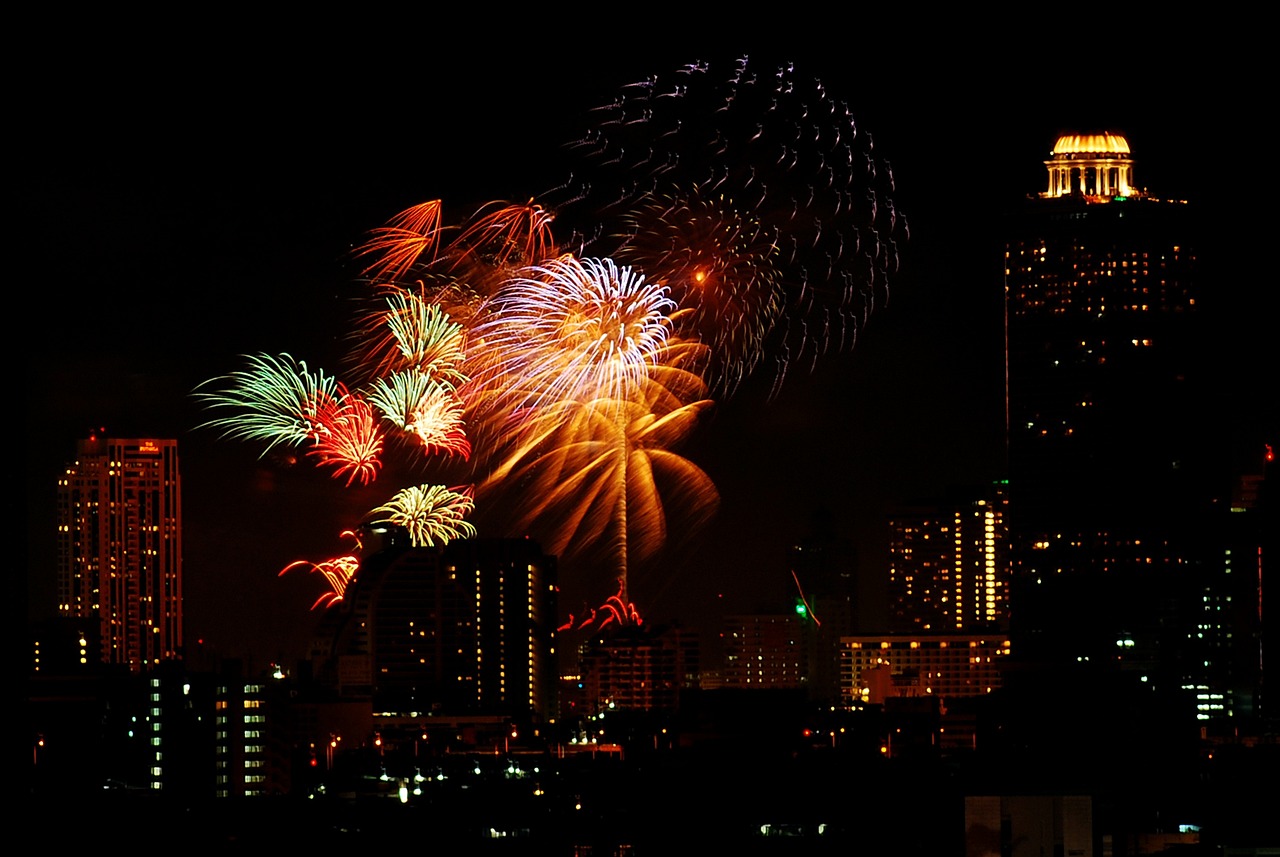
Symbolism and Spiritual Teachings
On Maha Shivaratri, the symbolism embedded in the celebrations goes beyond mere rituals, offering profound spiritual teachings that resonate with seekers on a deeper level. The festival embodies the concept of destruction and regeneration, symbolizing the cyclical nature of life where endings pave the way for new beginnings. Just as Lord Shiva is the destroyer of ignorance and negativity, Maha Shivaratri encourages individuals to introspect, let go of their attachments, and embrace positive change.
The significance of this auspicious day lies in its emphasis on inner transformation and spiritual growth. It serves as a reminder that like the cosmic dance of Lord Shiva, life is a continuous process of creation and dissolution, urging devotees to surrender their ego and desires to attain spiritual enlightenment. Through the rituals and prayers performed during Maha Shivaratri, individuals seek to cleanse their consciousness, purify their intentions, and align themselves with the divine cosmic energy.
Moreover, the festival teaches the importance of resilience and perseverance in the face of challenges. Just as Lord Shiva's third eye represents wisdom and discernment, Maha Shivaratri inspires believers to awaken their inner wisdom, overcome obstacles, and emerge stronger from adversities. The symbolic representation of Shiva as the Supreme Being beyond duality and form underscores the ultimate goal of transcending worldly illusions and realizing one's true self.
Ultimately, Maha Shivaratri serves as a spiritual beacon guiding individuals on the path of self-discovery, self-improvement, and self-realization. It encapsulates the essence of devotion, surrender, and transformation, inviting participants to delve deep into their souls, confront their fears, and embrace the eternal truths of existence. The festival's profound symbolism and spiritual teachings offer a transformative experience that resonates with the core essence of human existence.
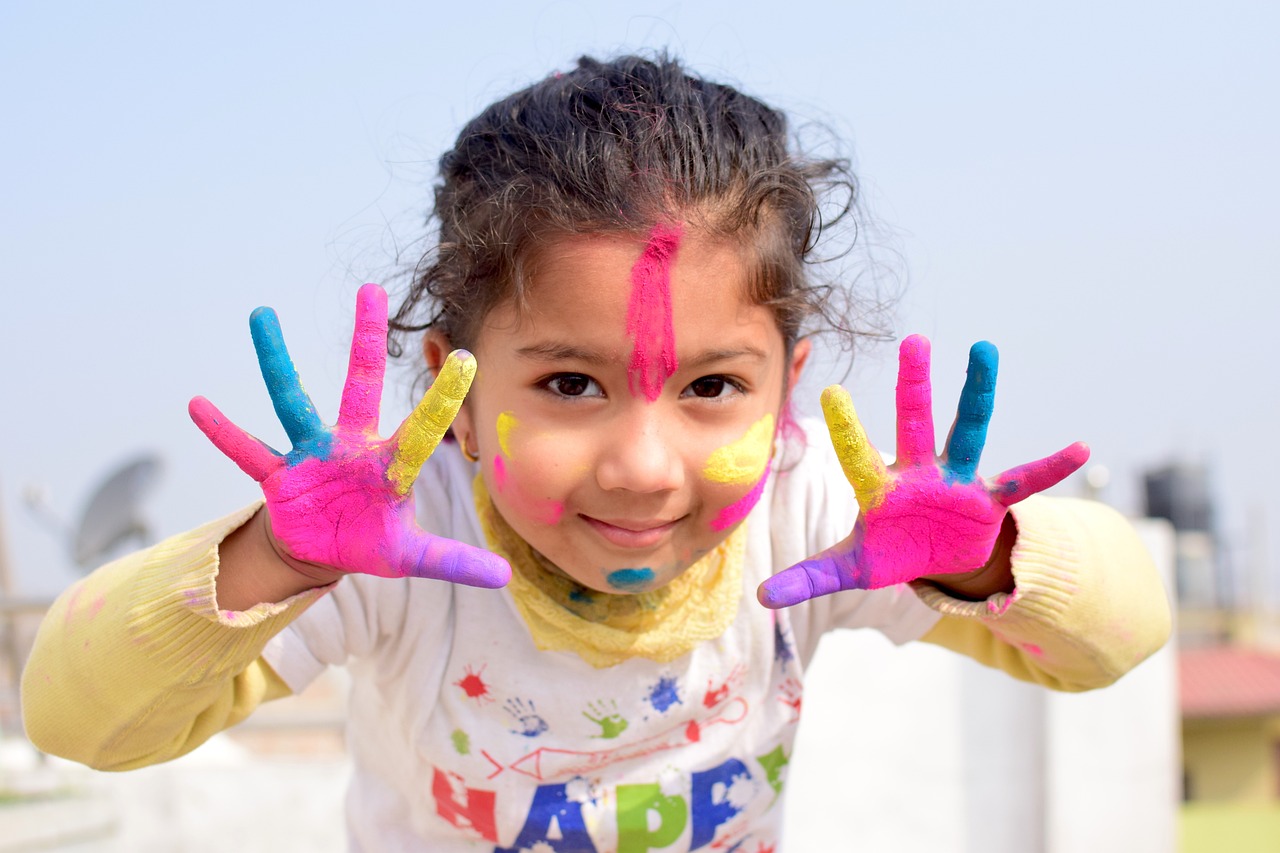
Global Observance and Unity
When it comes to Maha Shivaratri, the celebration transcends geographical boundaries and cultural differences, uniting people from various corners of the world in a shared reverence for Lord Shiva. This auspicious festival is not confined to just one region or community; it resonates globally, attracting devotees, spiritual seekers, and curious minds alike. The essence of Maha Shivaratri lies in its ability to bring together individuals from diverse backgrounds, fostering a sense of unity, peace, and spiritual harmony.
Across different countries and continents, the spirit of Maha Shivaratri manifests in unique ways, blending local traditions with the universal reverence for Lord Shiva. From the bustling streets of India adorned with colorful decorations to serene temples in far-off lands echoing with devotional chants, the global observance of Maha Shivaratri is a testament to the interconnectedness of humanity in the pursuit of spiritual enlightenment.
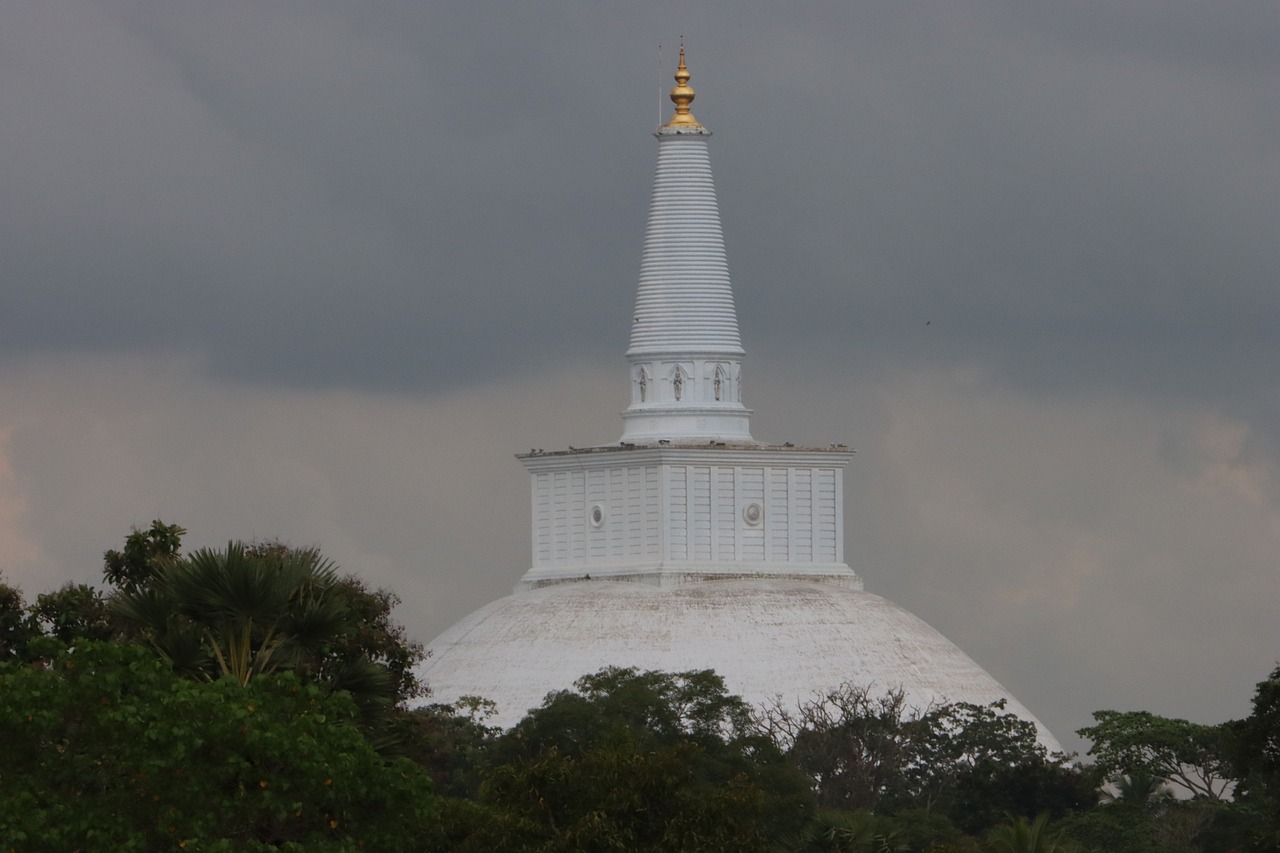
Modern Interpretations and Relevance
As we delve into the modern interpretations and relevance of Maha Shivaratri in today's world, it becomes apparent that this ancient festival holds a timeless significance that resonates with people across generations. In a rapidly changing society where traditions evolve and adapt, Maha Shivaratri continues to be celebrated not just as a religious observance but also as a cultural heritage that connects individuals to their roots.
One of the modern interpretations of Maha Shivaratri lies in its universal message of unity and spiritual harmony. In a world marked by divisions and conflicts, this festival serves as a reminder of the common humanity that binds us all together. Regardless of one's background or beliefs, the essence of Maha Shivaratri transcends boundaries, inviting people to come together in a spirit of peace and solidarity.
Moreover, the contemporary relevance of Maha Shivaratri is reflected in the way individuals reinterpret its rituals and practices to suit their modern lifestyles. While the traditional customs of fasting and prayers remain integral to the festival, many people now incorporate innovative approaches to express their devotion to Lord Shiva. From digital satsangs to online meditation sessions, Maha Shivaratri has found new avenues of expression in the digital age.
Furthermore, the spiritual teachings associated with Maha Shivaratri offer profound insights into the human experience, emphasizing the themes of inner transformation and self-discovery. In a world driven by material pursuits and external validations, the festival encourages introspection and contemplation, guiding individuals on a journey towards self-realization and spiritual fulfillment.
Frequently Asked Questions
- What is the significance of Maha Shivaratri?
Maha Shivaratri is a Hindu festival dedicated to Lord Shiva, symbolizing the overcoming of darkness and ignorance. It is celebrated with fasting, prayers, and rituals to honor Shiva's divine energy and seek blessings for spiritual growth.
- Why is fasting important during Maha Shivaratri?
Fasting during Maha Shivaratri is believed to purify the body and mind, enhance self-discipline, and create a deeper connection with the divine. It is a way to demonstrate devotion and seek blessings for inner transformation.
- What are some traditional customs observed on Maha Shivaratri?
Traditional customs on Maha Shivaratri include offering prayers, performing sacred rituals, staying awake all night in vigil, and visiting Shiva temples. These practices are aimed at seeking divine grace and blessings.
- How is Maha Shivaratri celebrated globally?
Maha Shivaratri is celebrated globally by people from diverse cultures and backgrounds. It serves as a unifying festival that promotes peace, spiritual harmony, and the shared reverence for Lord Shiva across different communities.

